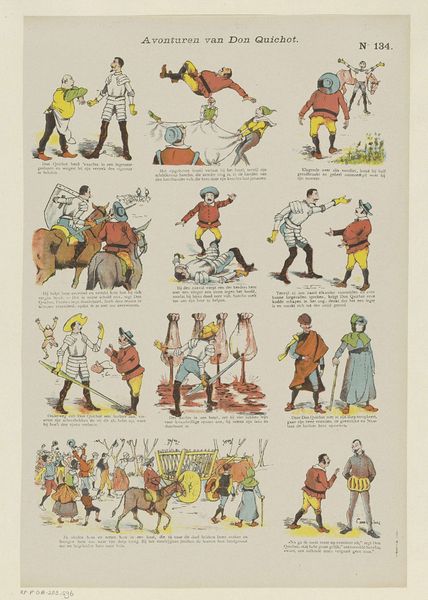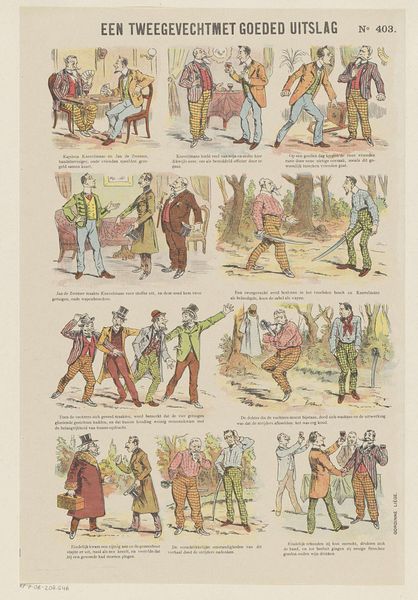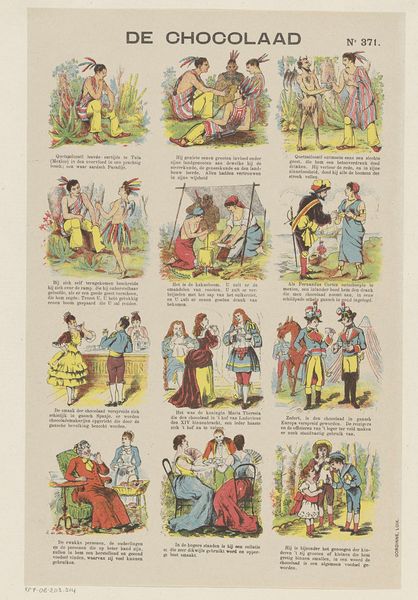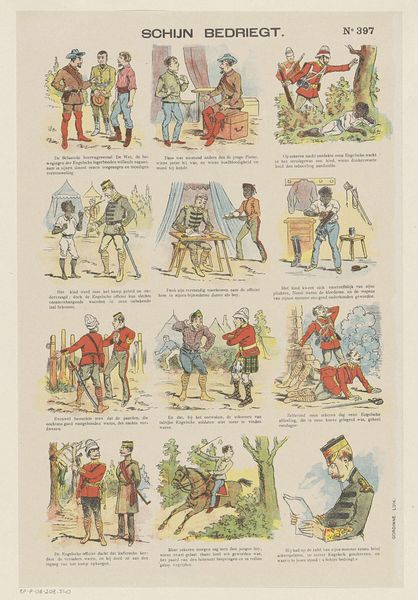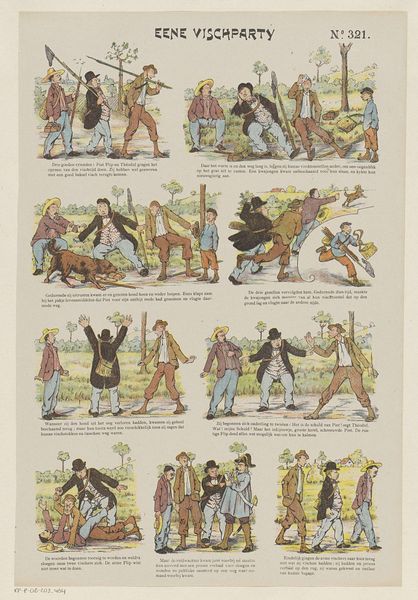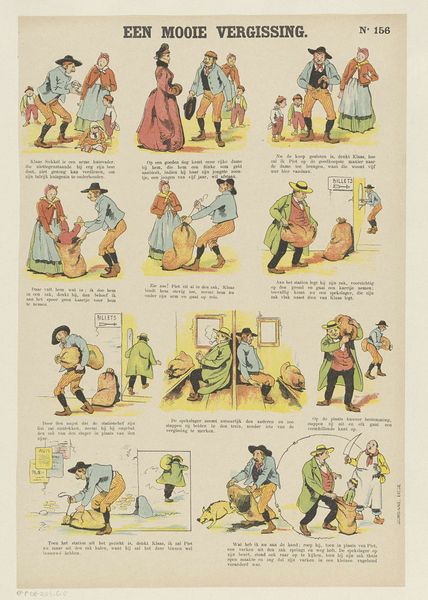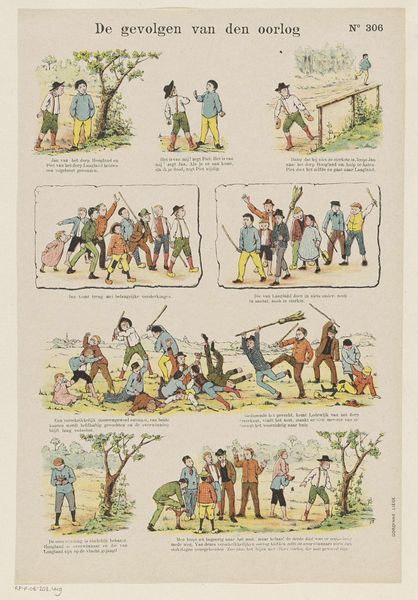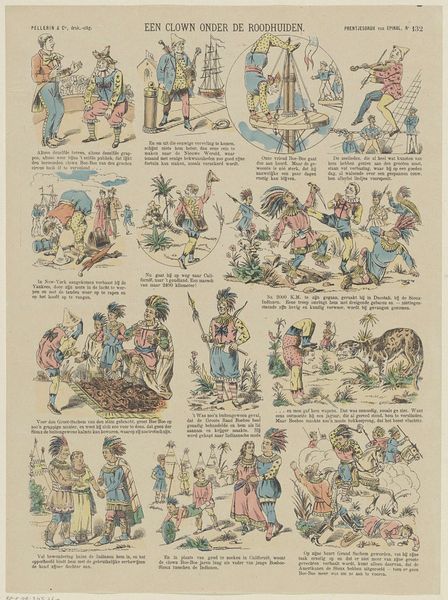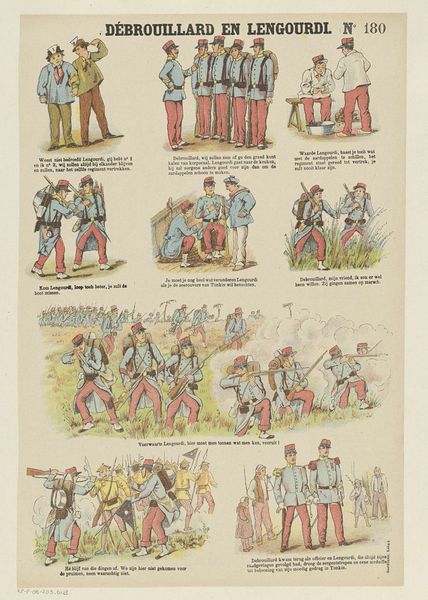
print, watercolor
#
aged paper
#
narrative-art
# print
#
sketch book
#
traditional media
#
personal sketchbook
#
watercolor
#
sketchwork
#
journal
#
folk-art
#
sketchbook drawing
#
watercolour illustration
#
storyboard and sketchbook work
#
sketchbook art
Dimensions: height 400 mm, width 269 mm
Copyright: Rijks Museum: Open Domain
Curator: Here we have a delightful narrative artwork titled "De houthakker en de kabouter," or "The woodcutter and the gnome," created sometime between 1894 and 1959. It is held here at the Rijksmuseum, an intricate scene rendered in watercolor and print. My first observation turns to the composition: the gridded structure immediately gives it an almost comic strip like layout. Art Historian: It certainly feels like a page from a storybook, doesn't it? The sequencing and depiction of folktales like this reflect a growing interest in cultural identity and accessibility. Images like these played a large role in popular education and the dissemination of moral lessons at that time. Curator: Focusing on the figures themselves, I'm drawn to the clear delineations and the color palette – earthy browns offset by the bright reds and yellows. Semiotically, it signals an interesting duality; the woodcutter, depicted in muted tones and the fantastical gnome, are represented by these brilliant hues. The visual hierarchy is evident! Art Historian: I agree. The bright colors and exaggerated poses of the gnome indicate his importance. In terms of cultural context, such imagery normalized the concept of the 'other' - fantastical creatures, or the marginalized populations among us. Art becomes a mechanism for controlling social narratives. Curator: It is precisely in its narrative capacity, with a beginning, middle, and an end, and through formal structuring elements, like the repetition of poses that lend the subject familiarity... the use of perspective creates a depth despite the image existing on an overall flat plane. This imbues the scene with a rich reading. Art Historian: From a historical standpoint, understanding the intended audience helps in interpretation. Broadsides, periodicals, pamphlets using affordable printed art and illustration enabled a mass culture and played roles of influencing political or consumer attitudes during this period. Curator: Examining how form echoes content adds more insights into such considerations. Thank you for providing historical perspective on "De houthakker en de kabouter," and this dialogue has added to my appreciation of the visual rhetoric employed! Art Historian: It’s fascinating how an image created as accessible entertainment holds such complex layers of social and cultural meaning even to this day.
Comments
No comments
Be the first to comment and join the conversation on the ultimate creative platform.

